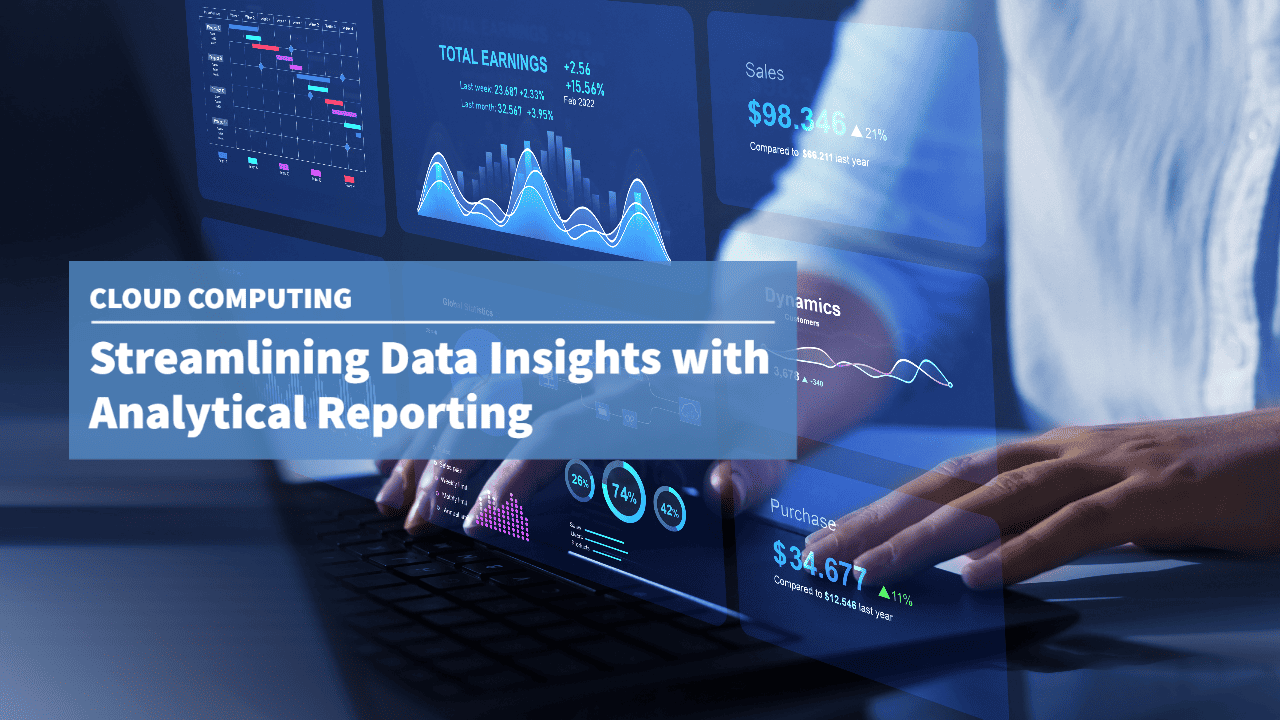Making sound decisions based on data is essential for organizations to gain a competitive edge. Analytical reporting has improved data insight gathering and enabled companies to focus on data-driven strategies and tools to measure performance and make informed decisions. This article explains why analytical reporting should be implemented in organizations.
More...
This post was originally published in BoldBI.
Use Case: Analytical Reporting

Problem Statement
Consuming data through standard dashboards and reporting interfaces is inefficient since it presents static data and lacks self-service features to derive insights for informed decision making.

Realization Approach
A BI platform like BoldBI that integrates with over 150 data sources and provides a rich set of widgets to build customized dashboards for analytical reporting.

Solution Space
With analytical reporting, data driven decisions are expedited to avoid back and forth interaction between business and technical teams to generate multiple static reports to derive business critical insights.
What is analytical reporting?
Analytical reporting is a type of reporting that uses data analysis to derive insights and inform decision-making. It involves collecting, organizing, and analyzing data to identify trends, patterns, and relationships. Analytical reporting can be used to monitor performance, identify opportunities, and make predictions. It can take the form of a published report or an interactive dashboard.
How analytical reporting drives business success
Analytical reporting is vital for any innovative business aiming to prosper in the short and long term. A well-prepared analytical report quickly gives a company an edge over the rest in a competitive environment as they possess a self-awareness of their own activities and know the strategies to implement to succeed.
Here are some of the key benefits of using analytical reporting in business:
- Collaboration and data access: Analytical reporting presents data in a clear and precise way, giving business owners a clear view of each department’s, team’s, and employee’s contribution to the company, enhancing collaboration.
- Proper decision-making: Analytical reports visualize data in a way that enables business owners to have sensible reference points in making vital decisions.
- Identify challenges and mistakes: Analytical reports present data in a clear and transparent format, enabling business owners to use the information to identify any impending challenge and make the necessary adjustments.
- Facilitate innovations: Analytical reports allow business owners to produce new ideas to improve the operations of the company.
Common challenges in analytical reporting
Using analytical reporting in business can be challenging. Here are some of the common obstacles faced:
- Data quality: To produce accurate analytical reports, data must be complete and precise. However, achieving high data quality is demanding since data originates from various sources and can be inconsistent, incomplete, or flawed.
- Data integration: Data integration involves merging data from multiple sources to create a unified view. The process can be difficult since data may exist in different formats, requiring different tools or procedures to merge.
- Data analysis: Analyzing data can be challenging, especially when handling vast amounts of data or conducting complicated analyses.
- Data visualization: Analytical data is usually visualized in charts, graphs, and maps. However, choosing effective data visualizations can prove to be challenging since it requires an understanding of the audience and the type of data being presented.
- Security and privacy: Analytical reporting often involves handling sensitive data, such as customer information or financial data. It can be challenging to ensure data privacy and security since the data may be accessed by multiple users or stored in multiple locations.
Key strategies for creating actionable analytical reports
Here are some key tips to guide you in creating a good analytical report:
Focus on the goal and object of the report
The main goal of analytical reporting is to present and visualize data in a way that is easy for the end user to understand. Therefore, the analytical report should present data that directly answers the end users’ questions and appropriately addresses any rising concerns.
Ensure data is relevant and accurate
Analytical reporting primarily relies on data visualization for effective communication. When presenting data, ensure it is accurate and not exaggerated or repeated. Presenting repetitive or incomplete data may create a bad impression for any interested party who would like to be involved in the business.
Identify relevant metrics and KPIs
Metrics and KPIs are the basis of BI reporting in any company. When you need to visualize your data, carefully identify the metrics and KPIs of the business to guide the end user in interpreting the analytical report.
Utilize modern BI tools
When presenting analytical reports, consider using modern dashboard and report software that has excellent usability features. Modern BI tools allow you to design and publish reports quickly and easily, and usually grant report audiences interactive features that let them navigate the data as they wish.
Choose proper visualizations
Most companies have a wide variety of data to present. Therefore it is important to ensure you choose chart types that present the data properly and communicate the story within the data clearly with the target audience.
Apply interactive features
When creating analytical reports, it is a good idea to apply interactive features that enable the end user to navigate the report as they want without further technical assistance. Some common interactive features are drill-down and filtering.
Include action items
The usual reason for preparing an analytical report is to evaluate the performance of the business. Therefore, based on the data in the analytical report, you should include suggestions that lead to increased revenue and overall growth. Without future plans, an analytical report is inert.
Consider the target audience
When the audience of the report is not considered, the report will either end up in the hands of people who have no stake in the data, or present stakeholders with irrelevant data. During report preparation, ensure the report is relevant to all the departments and stakeholders in the company for maximum effectiveness.
Provide context
A great number of data points are presented in analytical reports, but without context, those data points may not be particularly helpful. Be sure to explain or provide the context of your findings, including any trends, market conditions, or other elements that might have an impact on them.
Read the original post to know more about the use cases of analytical reporting and the ways to create actionable analytical reports


